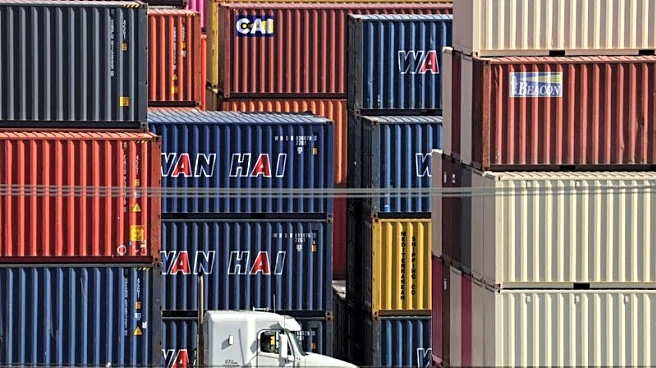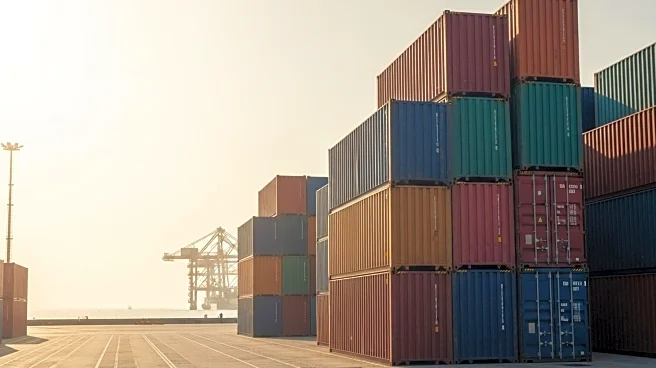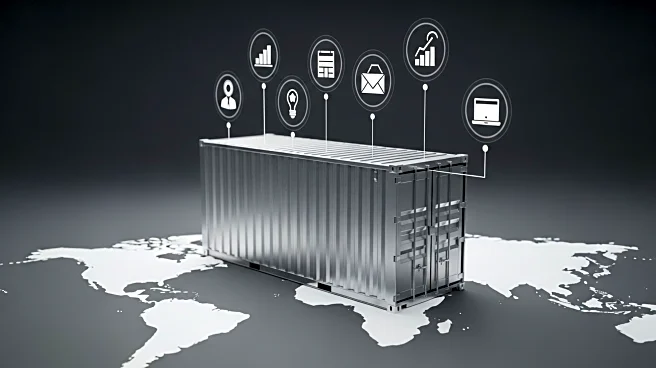What is the story about?
What's Happening?
The article discusses how supply chain companies are responding to the challenges posed by tariffs, particularly those implemented during President Trump's administration. These tariffs have accelerated existing trends towards regionalization and diversification in global trade. Companies are increasingly nearshoring production to countries like Mexico and investing in technology to enhance supply chain flexibility and visibility. The shift is driven by the need to reduce dependency on single countries, such as China, and to mitigate risks associated with unpredictable trade policies. The article highlights that while reshoring to the United States is occurring in select sectors, nearshoring is more prevalent, with Mexico being a significant beneficiary. The focus is on building resilient supply chains that prioritize supplier diversity and technological integration over cost efficiency.
Why It's Important?
The shift towards regionalized supply chains and increased technology integration is significant for U.S. industries as it impacts trade dynamics and economic resilience. Companies that adapt to these changes can potentially reduce costs associated with tariffs and improve their disaster recovery capabilities. This trend also aligns with broader geopolitical shifts, as countries seek to strengthen their economic independence and security. The move towards nearshoring and diversification can lead to increased domestic manufacturing, particularly in sectors critical to national security. However, it may also result in mild inflationary pressures due to the complexities of managing multiple supply chain bases. Overall, the ability to adapt quickly to trade shifts and leverage technology for real-time decision-making is becoming a strategic advantage for businesses.
What's Next?
As companies continue to navigate the complexities of tariffs and trade policies, they are likely to invest further in technology that provides real-time visibility and agility. This includes automated tariff data ingestion, AI-driven simulations, and integration with existing ERP and WMS platforms. The focus will be on building supply chains that can quickly adapt to geopolitical changes and regulatory requirements. Additionally, companies may explore new supplier relationships and optimize inventory management to enhance resilience. The ongoing shift towards regionalized trade networks suggests that businesses will continue to prioritize flexibility and risk management over pure cost efficiency.
Beyond the Headlines
The deeper implications of these supply chain adaptations include potential shifts in global trade power dynamics and the role of technology in shaping future logistics strategies. As companies move away from reliance on single-source suppliers, there may be a reduction in China's influence over global trade. The emphasis on technology-driven solutions could lead to increased demand for digital tools and platforms that support supply chain management. Furthermore, the focus on resilience and agility may drive innovation in logistics and procurement processes, potentially transforming how businesses operate in a globalized economy.
AI Generated Content
Do you find this article useful?
















